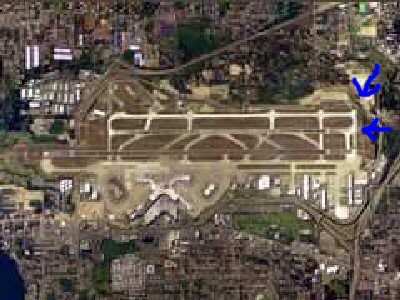Fri, Oct 29, 2010
Agency Highlights Greener Skies Over Seattle Program
 The FAA said Thursday it is awarding its largest Voluntary
Airport Low Emission (VALE) grant for an $18.3 million project at
Seattle-Tacoma International Airport (Sea-Tac) to improve air
quality and to reduce the use of conventional fuels at the
airport.
The FAA said Thursday it is awarding its largest Voluntary
Airport Low Emission (VALE) grant for an $18.3 million project at
Seattle-Tacoma International Airport (Sea-Tac) to improve air
quality and to reduce the use of conventional fuels at the
airport.
With the VALE grant, Sea-Tac will be able to install a
centralized preconditioned air plant that will allow aircraft
arriving at the gates to shut off their auxiliary power units and
connect to a cleaner central heating and cooling system. This
project will greatly reduce aircraft emissions on the ground. Since
the first VALE grant award in 2005, the FAA has funded 40 projects
totaling $83 million dollars.
"This program is helping airports around the country make needed
technological investments so they can be more environmentally
friendly," said U.S. Transportation Secretary Ray LaHood.
FAA Administrator Randy Babbitt announced the grant during a press
conference in Seattle where he highlighted environmental efforts
under way at Sea-Tac and by the Alaska Air Group (AAG) as examples
of the kind of innovative work being done in the aviation
community. "The FAA is encouraging airlines and airports to find
creative ways to reduce aviation's impact on the environment," said
Administrator Babbitt. "NextGen technology will also help aviation
go even greener by significantly reducing the amount of fuel burned
during air travel."
Administrator Babbitt discussed an innovative program under way
in the Sea-Tac area known as the Greener Skies over Seattle
project. The project began in early 2009 with the Alaska Air Group
(AAG), which includes Alaska Airlines and Horizon Airlines, the
Port of Seattle and the Boeing Co. The AAG is seeking to improve
efficiency at Sea-Tac through expanded use of NextGen
satellite-based technologies to provide more direct and optimized
descent paths to landing.

Sea-Tac File Image
The program has the potential to provide environmental benefits
to the region through reducing fuel burn, emissions, and the number
of people impacted by aircraft noise. In addition, lessons and
benefits gained from this effort may be transferred to other
airports around the nation. In mid-2010 Greener Skies over Seattle
became a FAA project and the first phase of Performance Based
Navigation instrument flight procedure development is now under
way.
More News
Aero Linx: Transport Canada We are a federal institution, leading the Transport Canada portfolio and working with our partners. Transport Canada is responsible for transportation p>[...]
Gross Navigation Error (GNE) A lateral deviation from a cleared track, normally in excess of 25 Nautical Miles (NM). More stringent standards (for example, 10NM in some parts of th>[...]
From AirVenture 2017 (YouTube Edition): Flight-Proven Booster On Display At AirVenture… EAA AirVenture Oshkosh is known primarily as a celebration of experimental and amateu>[...]
Aircraft Parachute System (CAPS) Was Deployed About 293 Ft Above Ground Level, Which Was Too Low To Allow For Full Deployment Of The Parachute System Analysis: The day before the a>[...]
Also: 48th Annual Air Race Classic, Hot Air Balloon Fire, FAA v Banning 100LL, Complete Remote Pilot The news Piper PA-18 Super Cub owners have been waiting for has finally arrived>[...]
 ANN's Daily Aero-Linx (06.29.25)
ANN's Daily Aero-Linx (06.29.25) ANN's Daily Aero-Term (06.29.25): Gross Navigation Error (GNE)
ANN's Daily Aero-Term (06.29.25): Gross Navigation Error (GNE) Classic Aero-TV: Anticipating Futurespace - Blue Origin Visits Airventure 2017
Classic Aero-TV: Anticipating Futurespace - Blue Origin Visits Airventure 2017 NTSB Final Report: Cirrus SR22
NTSB Final Report: Cirrus SR22 Airborne Affordable Flyers 06.26.25: PA18 Upgrades, Delta Force, Rhinebeck
Airborne Affordable Flyers 06.26.25: PA18 Upgrades, Delta Force, Rhinebeck




